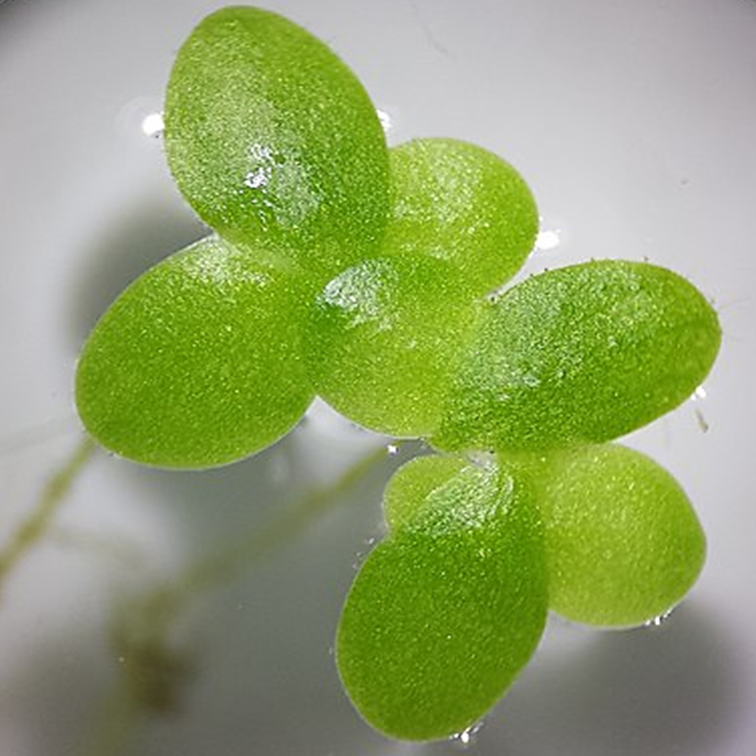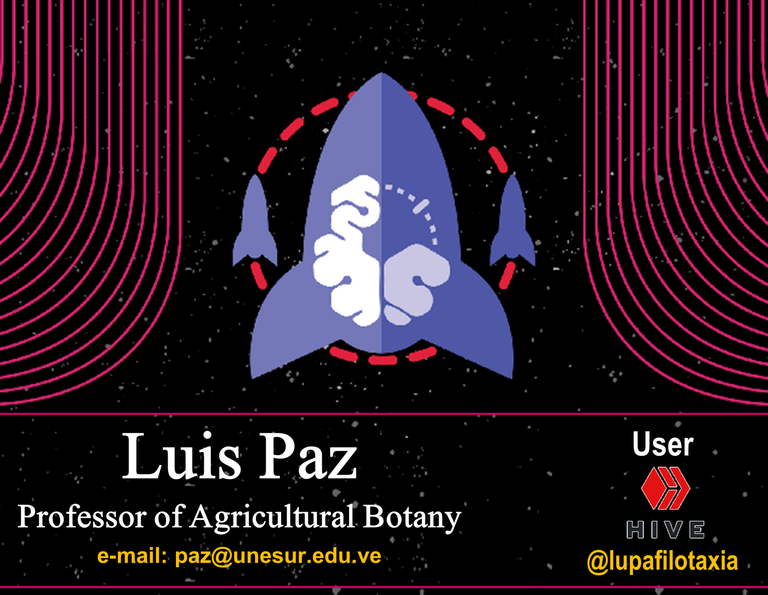
I will start this new publication, extending a cordial greeting to all users of the #Hive platform, especially to the members of #STEMsocial, and to each of the communities that support scientific academic content, this time I will be presenting an organographic, histological, taxonomic and ecological compendium of the aquatic macrophyte Lemna minor (Araceae).
Introduction
Lemna minor is of universal origin and belongs to the aquatic macrophyte category, it is widely distributed in the northern hemisphere as well as in southern regions of Asia, Africa and Australia. It is a potentially invasive species in freshwater bodies such as marshes, lakes, rivers, natural and artificial wetlands with little mobile water.
In South America, specimens of Lemna minor have caused serious environmental problems, particularly in most of the countries located near the equator, due to their biological condition of excessive growth, such is the case of Venezuela, where the greatest ecological damage generated by Lemna minor is reported, as it invades and covers a high percentage of the water mirror of Lake Maracaibo.
In this sense, and considering that Lemna minor is a fast-growing floating aquatic macrophyte, the purpose of this publication is to socialize the main organographic, histological, taxonomic characteristics and growth conditions, reproductive and ecological aspects of this important plant material.
Biological classification
Kingdom: Plantae
Division: Magnoliophyta
Class: Liliopsida
Family: Araceae
Gender: Lemna
Species: minor
Common names
Duckweed is the common name of cosmopolitan scope that is usually used to identify specimens of Lemna minor, however, it should be noted that this vulgar designation applies to all species of the genus Lemna, so to differentiate Lemna minor from the rest of the specimens, the epithets Common duckweed and Lesser duckweed are usually used.
Bioremediation potential
Even though from the ecological point of view the aquatic macrophyte Lemna minor has been catalogued as the most invasive species of the Araceae family, this is due to its behavior as an arvenous material that thrives in water environments rich in mineral nutrients and highly contaminated by heavy metals, nevertheless, in most cases Lemna minor does not generate any ecological problem, mainly because the green biomass produced by this aquatic macrophyte provides favorable habitats for a large number of amphibians, mainly frogs and toads, and also serves as food for fish and microbes that coexist in these water ecosystems.

Fig. 2 The green biomass produced by Lemna minor provides favorable habitats for toads and frogs. Public domain image Author: Tuxyso, 2013 / CC BY-SA 3.0
On the other hand, the extensive plant biomass produced by specimens of Lemna minor, has the potential to bioaccumulate pollutants such as chromium, mercury, nickel, lead, silver and zinc in its vegetative structures of thalloid morphology, which indicates that the absorption capacity exhibited by this aquatic macrophyte functions as a biological means to clean and recover highly polluted water bodies.

Fig. 3 Specimens of Lemna minor have the potential to bioaccumulate pollutants such as chromium, mercury, nickel, lead, silver and zinc. Public domain image Author: Wilfredor, 2007 / CC BY-SA 1.0
Origin and distribution
As mentioned at the beginning Lemna minor is of Universal origin, and like the rest of the specimens of the genus Lemna this aquatic macrophyte creates extensive biological mantles in ecoregions of America, Europe, Asia, Australia and New Zealand.
Botanical description
Way of life
Lemna minor is among the smallest aquatic macrophytes, specimens measure on average 2 to 4 mm in length and 2 mm in width, hence they are considered one of the smallest specimens of the Magnoliophyta division in the plant kingdom.
Root
Lemna minor exhibits a long, white, thread-like root morphology. It is worth mentioning that each vegetative segment (stem and leaf) is made up of a single root.

Fig. 4 The aquatic macrophyte Lemna minor exhibits a single root with a filiform morphology. Public domain image Author: Lamiot, 2016 / CC BY-SA 4.0
Vegetative segment
The specimens of Lemna minor are characterized by having a vegetative body little differentiated and of thalloid aspect, that is to say, they do not present developed vegetative organs, therefore, their organographic structures are constituted by a flattened vegetative segment equivalent to the set of the stem and leaf lamina.

Fig. 5 Lemna minor has a vegetative segment of flattened thalloid appearance equivalent to the whole stem and leaf lamina. Public domain image Author: Stefan L, 2018 / CC BY-SA 4.0
Flower
From the reproductive point of view Lemna minor has both sexes (monoecious species), its materials are constituted by well-differentiated unisexual flowers, exhibiting male flowers with a single stamen, and similarly female flowers with a single pistil absent perianth.
Fruit
The fruits of the specimens of Lemna minor, are similar to the cavity of the labyrinth of the human ear, hence, its floral morphology is placed in the utricle category (reproductive segment that can contain up to 4 seeds).
Reproduction
Sexual reproduction
Plants of the genus Lemna, can reproduce by a sexual system that is not very specialized in the production of unisexual flowers.
Asexual reproduction
It has been planned that the most recurrent form of reproduction in Lemna minor is asexual and by gemmation through vegetative multiplication and frond formation.
Growth
After the process of cell division, the newly formed vegetative segments of thalloid morphology adhere to the mother frond in the early stages of growth and development, then as each vegetative segment matures, it becomes an adult frond with the capacity to produce an estimated 20 additional thalloids.
Ecology
An ecological behavior that distinguishes the aquatic macrophyte Lemna minor, is associated with its biological capacity to grow in slow-moving water bodies, high percentage of organic pollutants, and declining water levels.

Fig. 6 The aquatic macrophyte Lemna minor thrives in slow-moving water bodies with a high percentage of organic pollutants. Public domain image Author: Matt L, 2020 / CC BY-SA 2.0
Anatomy and Histology
Regarding the histological characterization of the specimens of Lemna minor, it is important to emphasize that the leaf mesophyll shows large intercellular spaces, with parenchyma cells of isodiametric morphology and irregular distribution, followed by spaces constituted by aerenchyma cells, while in the epidermal region the upper segment is larger than the cells located in the lower zone with thalloid structures.

Fig. 7 The leaf mesophyll of Lemna minor has large intercellular spaces and parenchymatous cells of isodiametric morphology. Public domain image Author: Science Biotech, 2018 / CC BY-SA 4.0
SCIENTIFIC CONTRIBUTIONS OF THIS PUBLICATION
- As in the previous deliveries related to this topic, the publication was intended to socialize on the #Hive platform, fundamental information of an organographic, histological, taxonomic and ecological nature, as well as the bioremediation potential of the vegetative segments of Lemna minor with a thalloid morphology, in the constant search to continue disseminating manuscripts of technical-scientific usefulness.
BIBLIOGRAPHICAL REFERENCES CONSULTED AND CITED:
[1] Arroyave M. La lenteja de agua (Lemna minor L.): una planta acuática promisoria. Revista EIA. 2004. Article: Online access
[2] Arenas A., Lué-Merú M., Torres G. Evaluación de la planta Lemna minor como biorremediadora de aguas contaminadas con mercurio. Avances en Ciencias e Ingeniería. 2011; 2; 3: 1 – 11. Article: Online access
[3] Moody M., and Miller J. Lemna minor Growth Inhibition Test. Small-scale Freshwater Toxicity Investigations. 2005; 271 – 298. Article: Online access
[4] Slawomir S., and Woźny A. The distribution of lead in duckweed (Lemna minor L.) root tip. Plant and Soil. 2000; 226; 1: 107 – 111. Article: Online access
[5] Reale L., Mantilacci S., and Corboli M. Cyto-histological and morpho-physiological responses of common duckweed (Lemna minor L.) to chromium. Chemosphere. 2016; 145: 98 – 105. Article: Online access
ATTENTION
Readers and followers
If you wish to read more scientific articles in English or Spanish, of excellent academic quality, do not hesitate to visit #STEMSocial and #STEM-espanol, communities that promote scientific content mainly in the areas of Science, Technology, Engineering and Mathematics.
OBSERVATION

Congratulations @lupafilotaxia! You have completed the following achievement on the Hive blockchain and have been rewarded with new badge(s) :
Your next target is to reach 160000 upvotes.
You can view your badges on your board and compare yourself to others in the Ranking
If you no longer want to receive notifications, reply to this comment with the word
STOPThank you for the repeated and timely notifications.
You're welcome @lupafilotaxia, that's with pleasure! 😊
BTW, support us back and vote for our witness.
You will get one more badge and bigger upvotes from us when we notify you.
Thanks for your contribution to the STEMsocial community. Feel free to join us on discord to get to know the rest of us!
Please consider supporting our funding proposal, approving our witness (@stem.witness) or delegating to the @stemsocial account (for some ROI).
Please consider using the STEMsocial app app and including @stemsocial as a beneficiary to get a stronger support.